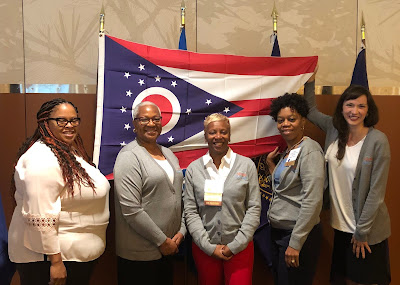AHIMA held its 73rd House of Delegates (HoD) meeting on Sunday, September 15, 2019 in Chicago Illinois. This is an all- day event that kicked off the AHIMA 19 Health Data and Information Conference. The morning kicked off with a networking breakfast and welcome from Christopher Wheat, CSA President for ILHIMA. Shawn Wells, Speaker of the House provided an overview of the agenda and plan for the day.
Dr. Wylecia Wiggs Harris, CEO of AHIMA also provided an update on the AHIMA strategy, highlighted the successes of the organization as well as spoke to the transformation plan. Seth Jeremy Katz and Breian Meakens provided a financial of AHIMA. Dr. Valerie Watzlaf, President of AHIMA provided an overview of the role of the House in regards to moving the strategies forward.
I attended Action Forum 2: Health Information Professional Champions facilitated by Shawn Ambruster, RHIA and Laura Douresseaux Collins, MSHCM, RHIA, CHPS. This purpose of this session was to address advocating for health information professionals to keep us at the forefront of the industry and reference existing HIM Awareness and HIM Reimagined resources to redefine HIM as champions in transforming health and healthcare.
During the forum we were broken up into five (5) groups and tasked with coming up with a thirty (30) second elevator pitch to be utilized if you as an HIM professional are asked what you do. Each group worked together and came up with pitches. Five elevator pitches were created. As a group we then reviewed all of the elevator pitches with an end goal of creating one. We struggled coming up with because the five that were created were really good. As time started winding down we collectively took bits and pieces from each elevator pitch to create one.
The facilitator presented the elevator pitch that we put together to all attendees of the HoD. Those of us that were in the forum felt that all of the pitches were viable and worthy of being utilized. We decided to submit all six elevator pitches to the House. The premise for this was that we concluded that the elevator pitch may vary dependent upon your audience. This gives you options.
Overall, the meeting was very informative and a great networking opportunity.








